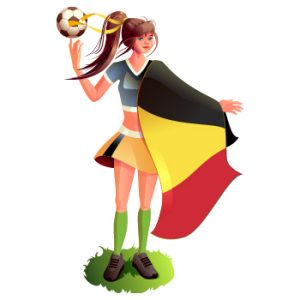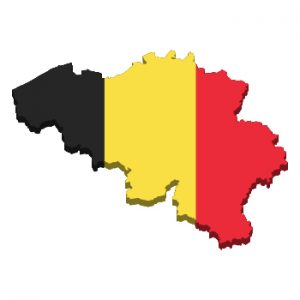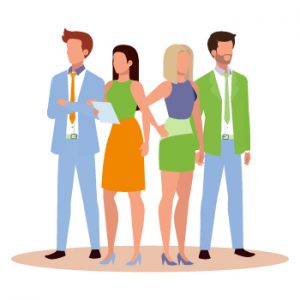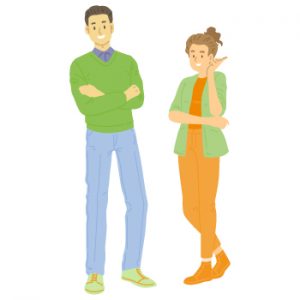
Discrimination By Belgian People
28 Sep Discrimination By Belgian People
World powers have always been hungry for land and riches, no matter if they already have enough of it. One vital source of gaining land and riches is colonization. The seizure of people’s identity, culture, language, traditions, and land have always caused riots and chaos. Decades of riots and protests lead to the independence and formation of new sovereign states. People demand and protest for independence only when the colonizers suppress them or their religious, cultural, traditional, or linguistic values and they fear that their language and culture would fade away into the ocean of history like discrimination by belgian against the dutch.
The independence of a nation also leads to the crumbling of the World power or Empire that previously had dominance over it. If you look deeply into the pages of history, you will find many such examples. The independence of a nation also leads to rivalries, discrimination, and the emergence of more enemies. Such kind of hate usually never fades away and with time, this feeling gets stronger. Such hate targets people on the basis of their race, language, or skin color.
Belgium and the Netherlands as well as being neighbors are also close allies but at the individual level, you will probably see discrimination. This discrimination is because of territorial and language differences. Mostly, people discriminate against Dutch. In Belgium, the country with the most Belgian speakers worldwide, individuals prefer Belgian and discriminate against other nationals and non-nationals who speak Dutch. At offices and schools in Belgium, people prefer Belgian French speakers over Dutch speakers.
Conception
Even with the World developing so fast, some people neglect serious issues such as discrimination which leads to the breaking down of society. There are still a large number of “privileged” people who do consider it a problem because they do not have to go through it on a daily basis.


Whereas, other communities having a different background are often criticized and discriminated against at work, at school, and in public places. Here, we will discuss Belgian discrimination against Dutch. It is discrimination based on the difference of language and territory.
What is Discrimination?
Discrimination is an unfair treatment of members of a society on the basis of their race, religious beliefs, age, gender, language, or any other characteristic. It is a behavior that produces the feeling of inferiority among people of a certain race or religion who are discriminated against.
Discrimination breaks both society and the sentiments of people. It is an unjust differentiation that is based upon hate. Here is an example. A company refuses to hire women for a job. This is because they doubt her capabilities being a woman.
What are its types?
Discrimination has four major types. To make it easy for you to understand, we have explained all of them below:
- Direct Discrimination: Direct discrimination is the kind of discrimination that targets a person who possesses a protected characteristic. The protected characteristics can also be associative or perceptive. This type of discrimination can sometimes be lawful, only when the discriminator is able to justify it objectively.
- Indirect Discrimination: This type of discrimination is usually unintended and is less obvious than direct discrimination. It is when a rule, law, or plan is put into practice. The rule or plan applies to everybody whether or not they possess a protected characteristic.
- Harassment: Harassment is the most obvious type of discrimination. In this type of discrimination, a certain community or an individual is usually targeted by bullying (verbal or physical), nicknames, intrusive questions, and comments. Harassment greatly injures a person’s dignity and confidence making them feel inferior to others.
- Victimization: This type of discrimination is subjected to an individual who alleges someone of discrimination, supports a complaint about it, arises concerns, or gives evidence. It is usually employees who are subjected to this type of discrimination to their detriment.
Discrimination in Modern World
Discrimination was very common a few centuries back when colonization was on the rise. Till now, people belonging from different backgrounds, are still discriminated but it is very less as compared to the 18th century and the 19th century. During the slavery period, people discriminated against others whom they thought, are of no value.
It is both morally and religiously wrong. In developing and developed nations, discrimination is often condemned and avoided while in underdeveloped nations, it is not even considered a thing and is generally disregarded. Because of people educated on this topic enlightening the young minds, discrimination in the modern World is minimized and will soon be completely eradicated.
Belgium and the Netherlands
Known as the “Capital of the European Union”, Belgium lies in Western Europe. It serves as the headquarters of NATO and the European Union. Belgium has three official languages namely, French, Dutch, and German. It is famous for its Renaissance architecture and medieval towns. To the north of Belgium lies, the Netherlands.


The Netherlands is a Northwestern European country having Amsterdam as its capital and Dutch as its official language. Both of these countries are close allies and neighbors. Belgium has a considerable Dutch population along with other linguistic communities. Sometimes, due to politics, things are different.
At the individual level, especially due to Belgium being a territory of the kingdom of the Netherlands formerly, tensions rise. These tensions arise mainly because of differences in languages which consequently ends in discrimination by belgian against the Dutch and vice versa.
The Belgian Language
Just like other World languages, French also has different dialects which vary regionally. The Belgian version of French is known as Belgian French. Though most of it same as the original French, there are few variations in spellings and pronunciations.
The Dutch Language
Dutch is a West Germanic language, belonging to the family of Indo-European languages. It is the official language of Belgium and the Netherlands. There are about 25 million speakers Dutch speakers worldwide.
Discrimination by the Belgian people
Discrimination is what leads to the separation of Belgium from the Kingdom of the Netherlands. In 1815, both Belgium (the Southern Netherlands) and Holland (the Northern Netherlands) were unified into one state to be ruled by King William I. Because of King William being a Protestant, the Catholics demanded him not to interfere in Clerical matters.
The liberals also demanded more freedom. This discrimination resulted in revolts in the city of Brussels in 1830. After William I’s troops were expelled by the revolts, Belgium (the Southern Netherlands) separated from the (northern) Netherlands forming a provisional government. The separation of Belgium from the Netherlands was also a linguistic divide.
During the London conference on November 4, 1830, the great powers recognized Belgium as a separate state with Leopold I becoming its first king. During the reign of Leopold II, the state of Congo in East Africa was transferred under his rule which he administered as personal property rather than a confederate state.
Due to him thinking of the Congolese population as “less-civilized” and slaves, they felt discriminated against. The Congolese people were deprived off of basic human rights. The black people were brutally murdered or starved to death under Leopold II’s rule because of forced labor and slavery. This racial discrimination land linguistic conflict by the colonial government of Belgium led to the independence of Congo in 1960.
Factors that lead to discrimination
Any kind of entertainment showing one community superior to another community, in any way (even in comedy) inspires people to discriminate against others. It is also the politics and the media which promote discrimination among people. Promoting discrimination culture should be avoided.
Conclusion
To conclude what we have stated so far, discrimination is a hateful act, and therefore, it should be prevented. In schools and offices, people should be educated on discrimination by belgian against the dutch which is actually synonymous with educating people in telling right and wrong between two paths.


